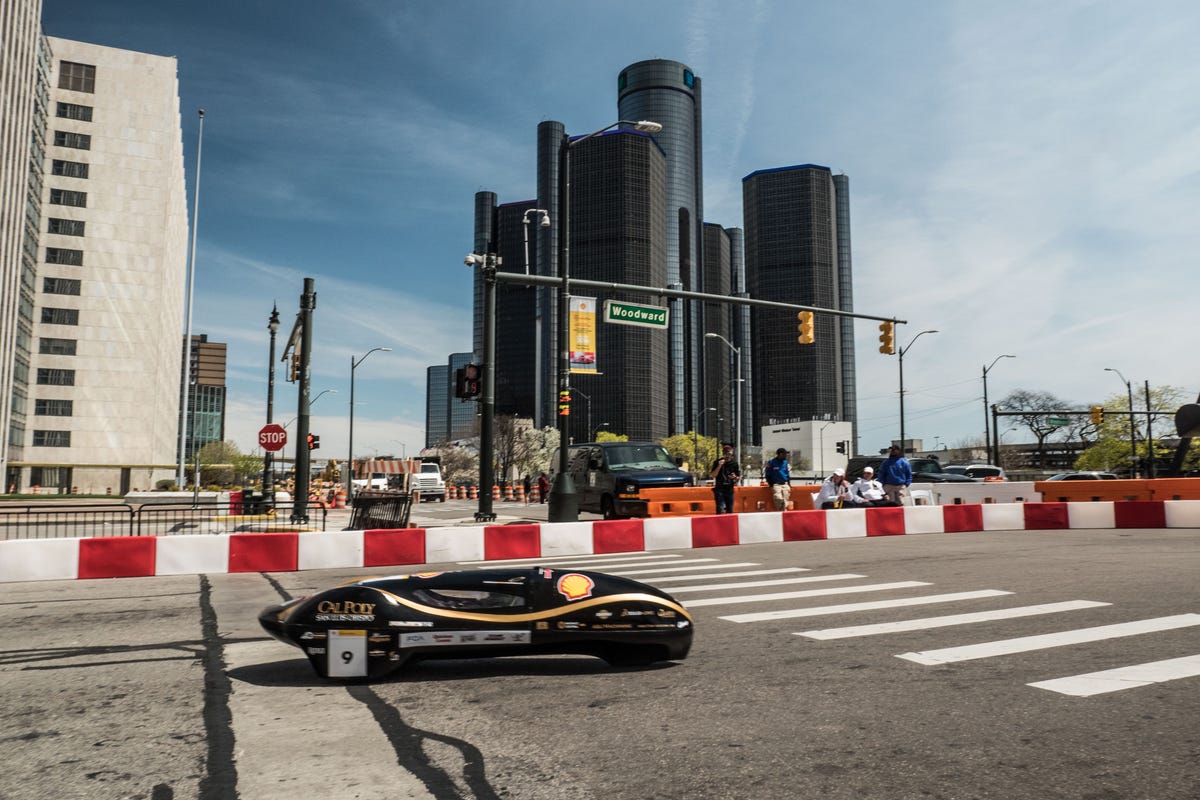Driving Detroit: Shell Eco-Marathon brings a fuel economy fight to the streets of Detroit
The 2016 edition of the Shell Eco-Marathon returned to Detroit, challenging high school and college students from all over to design and build super fuel-efficient vehicles. Split between two categories, teams can construct either a Prototype, a low-slung vehicle aiming for extreme efficiency, or an UrbanConcept that looks more like a traditional road-going car. Within each category, teams select from seven forms of propulsion energy including gas, diesel, ethanol, compressed natural gas, gas-to-liquids and ethanol. If teams opt for an electric powertrain, they can go with battery electric or hydrogen fuel cell.

For more than 30 years the Shell Eco-Marathon series has challenged high school and college students to go as far as possible on the least amount of energy. This year marks the second time the Americas edition of the event was held in Detroit, the automotive capital of the world.
In total, a record 124 teams representing seven different countries descended on Detroit to participate in this year's competition. Prior to putting boots on the ground, teams dedicated hundreds, if not thousands of hours to their cars for designing, fabricating, tuning and testing to push the efficiency envelope.
Split between two categories, one option teams could choose to build was a Prototype, a low-slung vehicle aiming for extreme efficiency.
Teams opting to build a vehicle in the other category, UrbanConcept, had to abide by rules that made their vehicles look like more traditional road-going vehicles with four-wheels, doors, lights and wipers.
The current fuel economy record is 3,587 mpg set in 2013 by a gas-powered prototype.
Within each category, teams can decide between one of seven power sources: gas, diesel, compressed natural gas, natural gas to liquid (GTL), hydrogen, ethanol or battery electric.
While the Eco-Marathon provides a platform for current high school and college students to gain hands-on development experience, Shell also took steps to try to inspire future competitors by busing in more than 9,000 area grade-school kids to see the cars and mingle with the teams.
The event was also free to spectators with a total of more than 20,000 visitors coming to Detroit's Cobo Center to check out all the action over the weekend.
This year's event marked the 10th running of the Americas event, and the second one held in Detroit after Shell transplanted it over from Houston last year. The move to the Motor City made a lot of sense, and was fitting according to Niel Golightly, Shell's vice president of external relations. "It [Detroit] is the capital of mobility...We've got students here from all over the hemisphere taking their vehicles that they built, and actually running them on the same streets Henry Ford tested his quadricycle on over a hundred years ago."
If you didn't make it to the Shell Eco-Marathon Americas this year, then you're in luck because the event is already confirmed to return to Detroit in 2017.

